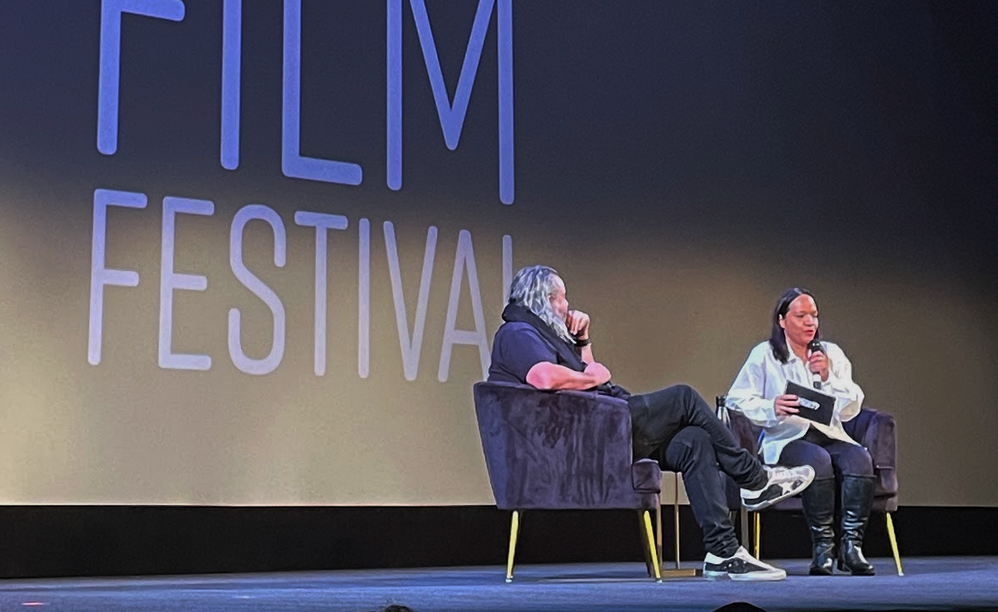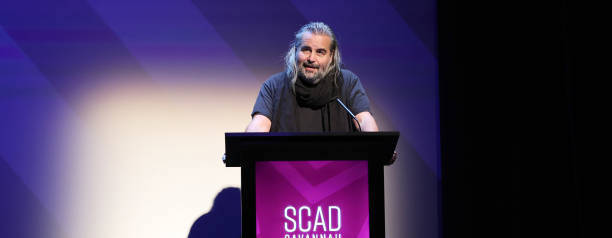Oppenheimer Cinematographer Hoyte van Hoytema Brings Boom of Inspiration at SAV Film Fest
Savannah Film Fest 2023 starts off with a bang at Sunday’s screening of Oppenheimer, which was accompanied by a speech and Q & A with the cinematographer of the film itself, Hoyte van Hoytema. As an artist, with masterful insight on the artistry and technology behind film and inspiring journey to success, Hoytema shared with the audience some valuable information. This article will reiterate such information in hopes to educate and inspire any of our fellow young artists unable to see the prestigious cinematographer speak in person.

Hoytema began by discussing a bit of the artistic approach to Oppenheimer. Being a film consisting of mostly stagnant conversations, inciting and maintaining investment from the audience is a hard task to achieve. However, Oppenheimer manages to hold the audience’s attention for the most part. This is in no doubt due to the film’s outstanding combination of different artistic mediums: the anticipation inducing soundtrack, back and forth pacing, and – the topic of the discussion – the eye-catching and intimate visuals as captured by Hoytema. He discussed how they utilized close ups to truly dive into the mind of the characters, and to make the audience feel as if they were invading the character’s privacy. However, the biggest challenge with this was finding a balance. Too many close ups and it loses its effect, but not using enough and the connection between the audience and the characters can be severed. In a film that is so reliant on understanding the moral conflict of the characters, this connection is vital to maintain.
Putting aside the why, Hoytema also went into detail on how the close ups – and the film overall – were filmed in a way that satisfied both his and director Christopher Nolan’s vision. Oppenheimer was shot on IMAX, which are typically larger and more noisy than other industry standard cameras. While this gave the look they were going for, the size could prove a challenge at times, especially during the close up shots. “It was very much about prepping actors that they were going to have to do all their diligent and very subtle work basically with a diesel engine in their face”, said Hoytema. The crew even developed specific lenses at times which allowed the camera to portray extreme close up shots, and provide different visual results. The crew even nicknamed one of them the “paranoia lens” due to it being used mostly for extreme close-ups of a character in internal conflict. This was not the end of the customization of technology for this film, with the crew also requesting a custom 65 mm IMAX camera from Kodak that could film in black and white.
Yet the art and tech is only half of what makes a movie, with the rest being the people themselves. Hoytema discussed during his Q & A the importance of collaboration, and, more specifically, the importance of everyone on set understanding other departments’ roles and responsibilities. He shouted out the production designer Ruth De Jong, expressing how valued her knowledge of shooting a film was when they were working on a team.
When asked about his own journey, and what advice he would give to young artists like the SCAD students in the audience, Hoytema shared pieces of his story, which is a bit non-traditional compared to what many SCAD students hear. Hoytema got to where he was by not following a straight line. He had ups and downs, being rejected from film school twice and struggling to climb his way through smaller crew roles. However, he found opportunities to prove himself as his journey went on, and he did so by being his best and truest self. “Don’t pretend to be somebody else” Hoytema said. “ If you do your job, do your job as yourself. Dare to be vulnerable”.
Hoytema’s journey is a comfort to those who worry about taking the “right” steps in their career. For, as he states, there is no “right” thing to do when on-set other than to do your job, do it the best you can, and – most importantly – do it as yourself.
